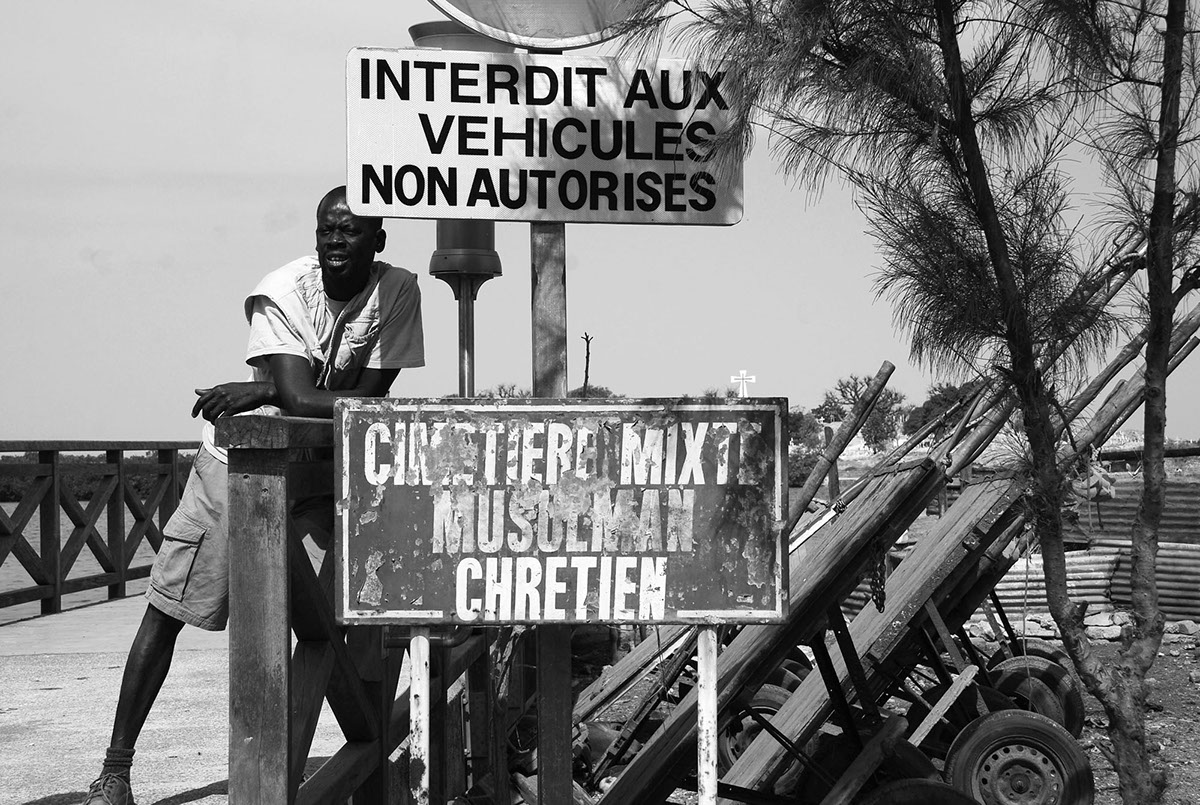Teranga is a photography project that seeks to portray the transformation of a historical space of the African diaspora in a place of memory and heritage of world history by UNESCO (since 1978). The Atlantic coast of Senegal hosted the main slave trading center on the West African coast for more than three centuries. In Gorée, it is estimated that over seven million African slaves were sold to ships bound for European colonies across the Atlantic. The door of no return, found at the bottom of the old slave house (now a museum), is a rite of transformation, which, on the one hand, signaled the end of a life made up of identities and references, and on the other the beginning of a new life, full of uncertainties.
This part of Senegal’s past is still very present. In the ancient port of Gorée, the waiting is still a big part of their lives. Houses built in the shape of old slave ships are still standing. With their backs to the past and the future, Teranga is the term in Wolof that best defines the relationship between these people and this historical place, because it defines hospitality, tolerance and harmony as almost a philosophy of life. Jean Paul Sartre`s idea that "it does not matter what they did to you, but what you do with what they did to you," has thus resulted in the transformation of a place in history to a place of memory.
Where before slaves were traded, now fish is sold; on the same sandy ground where they picked the best slaves, now free children play football; and in the south, an island made of shells features a mixed cemetery where Muslims and Christians are buried under the same baobab three.











